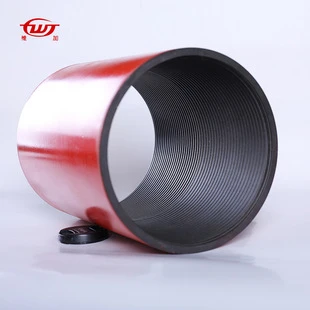- Afrikaans
- Albanian
- Amharic
- Arabic
- Armenian
- Azerbaijani
- Basque
- Belarusian
- Bengali
- Bosnian
- Bulgarian
- Catalan
- Cebuano
- Corsican
- Croatian
- Czech
- Danish
- Dutch
- English
- Esperanto
- Estonian
- Finnish
- French
- Frisian
- Galician
- Georgian
- German
- Greek
- Gujarati
- Haitian Creole
- hausa
- hawaiian
- Hebrew
- Hindi
- Miao
- Hungarian
- Icelandic
- igbo
- Indonesian
- irish
- Italian
- Japanese
- Javanese
- Kannada
- kazakh
- Khmer
- Rwandese
- Korean
- Kurdish
- Kyrgyz
- Lao
- Latin
- Latvian
- Lithuanian
- Luxembourgish
- Macedonian
- Malgashi
- Malay
- Malayalam
- Maltese
- Maori
- Marathi
- Mongolian
- Myanmar
- Nepali
- Norwegian
- Norwegian
- Occitan
- Pashto
- Persian
- Polish
- Portuguese
- Punjabi
- Romanian
- Russian
- Samoan
- Scottish Gaelic
- Serbian
- Sesotho
- Shona
- Sindhi
- Sinhala
- Slovak
- Slovenian
- Somali
- Spanish
- Sundanese
- Swahili
- Swedish
- Tagalog
- Tajik
- Tamil
- Tatar
- Telugu
- Thai
- Turkish
- Turkmen
- Ukrainian
- Urdu
- Uighur
- Uzbek
- Vietnamese
- Welsh
- Bantu
- Yiddish
- Yoruba
- Zulu
Casing Collar Design and Applications in Oil and Gas Industry
Understanding Casing Collars in the Oil and Gas Industry
Casing collars play a crucial role in the oil and gas drilling process. As part of the overall casing system, these components are essential for the structural integrity of the wellbore and the safety of the drilling operations. In this article, we delve into the significance of casing collars, their types, and their applications in the drilling industry.
What Are Casing Collars?
Casing collars are typically thick, metal rings that are installed alongside casing pipes during the drilling and production of oil and gas wells. They serve multiple purposes, including marking the depth of casing, providing structural support, and serving as attachment points for various drilling and completion equipment. The collars are designed to withstand the harsh conditions of a well environment, including high pressures and corrosive fluids.
Types of Casing Collars
There are several types of casing collars, each designed for specific applications in the drilling process. The most common types include
1. Regular Collars These are standard casing collars used primarily to provide structural support and stability in the wellbore. They come in various sizes to fit different casing diameters.
2. Cementing Collars These collars are specifically designed to aid in the cementing process. They often have a built-in feature to enhance the flow of cement into the annulus between the casing and the wellbore.
3. Guide Collars These collars are used to guide the casing into the wellbore, reducing the risk of damage to both the casing and the wellbore itself. They are typically tapered to facilitate smooth entry.
casing collar

4. Spider Collars Spider collars are designed to provide an anchor point for grabbing tools or certain types of equipment used during the drilling process. They enhance operational efficiency by allowing tools to be securely attached and manipulated.
Applications of Casing Collars
Casing collars are used throughout various stages of the oil and gas drilling process. Their applications are numerous and include
- Depth Marking Casing collars serve as vital markers for personnel and equipment, indicating specific depths in the well.
- Facilitating Cementing Operations When cementing the casing, collars ensure that cement is evenly distributed around the casing, helping to create a seal that prevents fluid migration and maintains well integrity.
- Well Control The structural support provided by casing collars is essential for maintaining well control, especially in high-pressure environments. They help prevent casing buckling and other structural failures.
- Enhanced Safety By ensuring that the casing is properly supported and sealed, casing collars contribute to the overall safety of the drilling operation. They minimize the risks associated with blowouts and equipment failure.
Conclusion
In conclusion, casing collars are indispensable components in the oil and gas drilling industry, serving multiple functions that directly impact the safety and efficiency of operations. Their design is tailored to withstand the challenging conditions found in subsurface environments, and they play a vital role in ensuring the structural integrity of wells. As technology continues to advance, the development of more sophisticated casing collars is likely to enhance their performance and effectiveness further. Understanding these components is essential for anyone involved in the drilling process, from engineers to on-site personnel, as their proper use and installation are critical for successful well completion and production.
-
Tubing Pup Joints: Essential Components for Oil and Gas OperationsNewsJul.10,2025
-
Pup Joints: Essential Components for Reliable Drilling OperationsNewsJul.10,2025
-
Pipe Couplings: Connecting Your World EfficientlyNewsJul.10,2025
-
Mastering Oilfield Operations with Quality Tubing and CasingNewsJul.10,2025
-
High-Quality Casing Couplings for Every NeedNewsJul.10,2025
-
Boost Your Drilling Efficiency with Premium Crossover Tools & Seating NipplesNewsJul.10,2025







